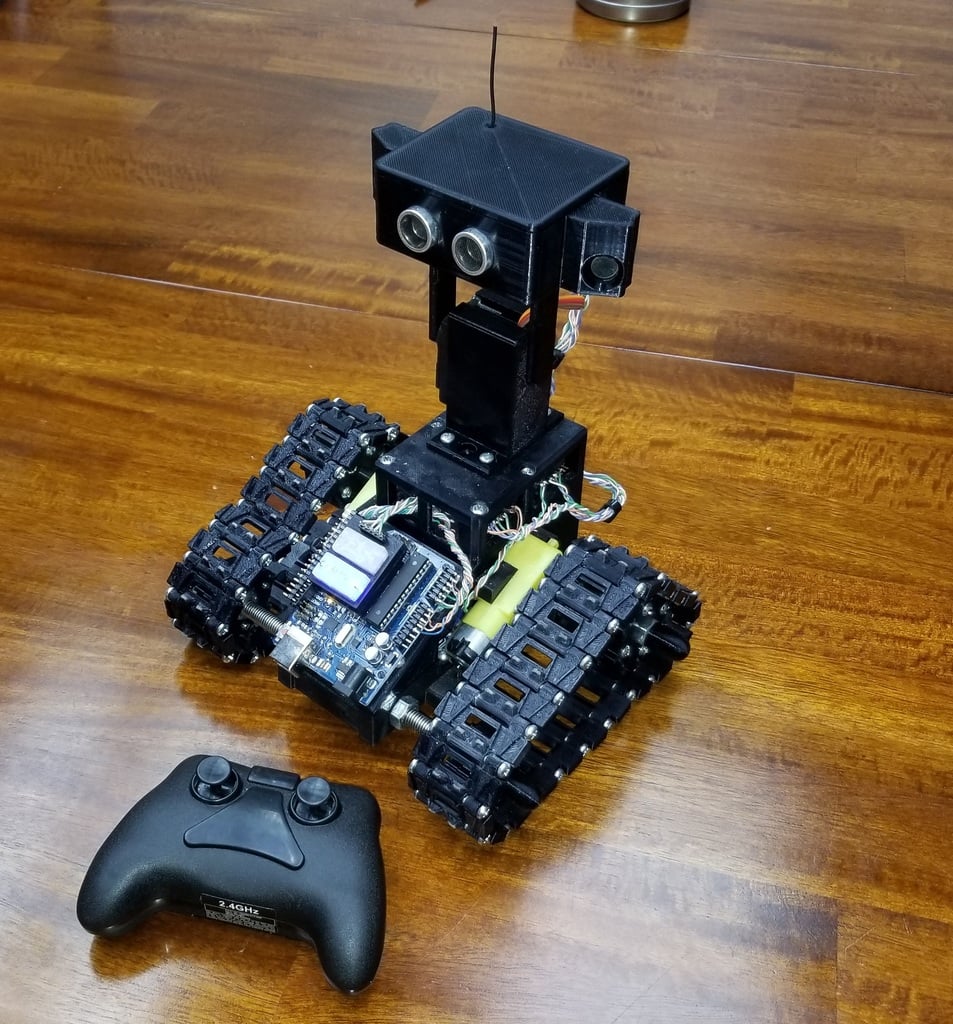
DIY Robot - Remote Autonomous Droid or R.A.D.
thingiverse
https://youtu.be/wS9mhZo7HIQ https://youtu.be/X_6tSoJ0bkk Remote Autonomous Droid or R.A.D. is a fully functional, 3D printed, DIY robot based on the Tri-Track SCAD version (https://www.thingiverse.com/thing:2832658). Two button controls allow for four base functions including 2.4ghz digital RC control, autonomous roaming with ultrasonic object avoidance and audio investigative tracking, motor/sensor standby, and diagnostic serial readout. A programmed RC override in the autonomous mode gives users full control at any time to prevent accidents. After discovering Tri-Track style robot chassis on Thingiverse.com, I wanted to build a small robot platform based on these designs. Starting with the Tri-Track SCAD Version and TT Motor, I preferred the single part chassis and cheaper hobby motor option. I imported these parts into Fusion 360 and designed my own mounting parts to attach various common Arduino sensor modules. When designing any robot, drive system, motors, and power source are key factors. In this case, a T-1228A 12V 8000mAh rechargeable Lithium Ion battery pack was selected for its correct amperage and fit between the SCAD motor mounts. A custom power regulator mount for a standard LM2596S DC 3A step-down was designed, and a second regulator was used to feed the motor controller directly. A custom 3D printed circuit board (https://www.thingiverse.com/thing:3190898) interfaces Arduino I/O pins, power connections, headers for sensor connections, RC receiver, resistors for LEDs, capacitors for motor filters, and an LM298N micro motor controller. These connections were hand soldered using 22G cat5E solid wire and a tight loop solder method. Object avoidance is handled by a single HC-SR04 Ultrasonic Sensor programmed to start an avoid function when an object is detected within 25cm of the robot's forward path. Two MAX9814 Microphone amplifier modules are integrated for human interaction functions, comparing sound levels on either side of the head in autonomous mode. My first design used a Foscam FI8909W for wireless video transmission from the bot, attaching sensors to the camera using a servo mount, servo arm, and faceplate. A new head, servo mount, and servo arm were later designed to allow easier build without requiring the camera, concealing the RC Receiver Board within the head box. R/C control is handled by a 2.4Ghz wireless receiver scrapped from a RC rover toy purchased at Walmart for $19.88 (New Bright RC Dune Tracker Stunt Buggy). This particular RC vehicle was selected due to its tank style steering and 2.5ghz digital controls, making great hobby control setups with really good range. I have included all .stl files created by me, a wiring diagram, and my latest version of the full Arduino .ino robot OS.
With this file you will be able to print DIY Robot - Remote Autonomous Droid or R.A.D. with your 3D printer. Click on the button and save the file on your computer to work, edit or customize your design. You can also find more 3D designs for printers on DIY Robot - Remote Autonomous Droid or R.A.D..
